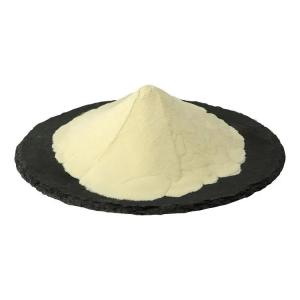News list
News Center
Hot Product
News
Phosphoric acid and mineral balance education
Time:2025-10-27
1. Introduction to Phosphoric Acid
Phosphoric acid (H₃PO₄) is a colorless, odorless, and non-volatile inorganic acid widely used in food processing, pharmaceuticals, and agriculture. In nutrition science, it is recognized for its role as a source of phosphorus, one of the essential minerals required for maintaining normal body functions. However, its consumption—particularly through processed foods and soft drinks—has raised questions about its influence on mineral balance in the human body.
2. The Role of Phosphorus in the Body
Phosphorus, primarily obtained from phosphoric acid and phosphate compounds, is a vital mineral involved in numerous physiological processes. It contributes to bone and tooth structure, energy metabolism (as ATP), and cellular signaling. The balance between phosphorus and other minerals—especially calcium and magnesium—is critical for maintaining skeletal integrity and metabolic stability.
3. Phosphoric Acid in Foods and Beverages
Phosphoric acid is commonly added to soft drinks, processed cheeses, and certain baked goods to provide acidity, enhance flavor, and improve preservation. While it helps stabilize products and extend shelf life, excessive intake from these sources can alter the body’s mineral equilibrium, particularly by increasing phosphorus levels relative to calcium.
4. Impact on Calcium and Bone Mineral Balance
An imbalance between phosphorus and calcium can affect the body’s mineral homeostasis. When phosphorus intake is disproportionately high, the body may reduce calcium absorption or mobilize calcium from bone to restore equilibrium. Over time, this can impact bone density and structural strength. Therefore, understanding the balance between dietary calcium and phosphorus is essential in nutritional education.
5. Educational Focus: Promoting Balanced Mineral Intake
Nutritional education programs should emphasize the importance of balanced mineral consumption. Key strategies include:
Encouraging natural food sources such as dairy, legumes, and whole grains for adequate calcium and phosphorus.
Limiting high-phosphoric-acid beverages such as cola drinks.
Highlighting the calcium-to-phosphorus ratio in diet planning to maintain mineral equilibrium.
Through informed choices, individuals can achieve better control over mineral intake and support long-term skeletal and metabolic health.
6. Conclusion
Phosphoric acid plays an important role in food technology and nutrition, yet its relationship with mineral balance deserves careful attention. By fostering awareness of phosphorus–calcium interactions and promoting balanced diets, educational initiatives can help individuals maintain optimal mineral health and prevent nutritional imbalances in the long run.
Phosphoric acid (H₃PO₄) is a colorless, odorless, and non-volatile inorganic acid widely used in food processing, pharmaceuticals, and agriculture. In nutrition science, it is recognized for its role as a source of phosphorus, one of the essential minerals required for maintaining normal body functions. However, its consumption—particularly through processed foods and soft drinks—has raised questions about its influence on mineral balance in the human body.
2. The Role of Phosphorus in the Body
Phosphorus, primarily obtained from phosphoric acid and phosphate compounds, is a vital mineral involved in numerous physiological processes. It contributes to bone and tooth structure, energy metabolism (as ATP), and cellular signaling. The balance between phosphorus and other minerals—especially calcium and magnesium—is critical for maintaining skeletal integrity and metabolic stability.
3. Phosphoric Acid in Foods and Beverages
Phosphoric acid is commonly added to soft drinks, processed cheeses, and certain baked goods to provide acidity, enhance flavor, and improve preservation. While it helps stabilize products and extend shelf life, excessive intake from these sources can alter the body’s mineral equilibrium, particularly by increasing phosphorus levels relative to calcium.
4. Impact on Calcium and Bone Mineral Balance
An imbalance between phosphorus and calcium can affect the body’s mineral homeostasis. When phosphorus intake is disproportionately high, the body may reduce calcium absorption or mobilize calcium from bone to restore equilibrium. Over time, this can impact bone density and structural strength. Therefore, understanding the balance between dietary calcium and phosphorus is essential in nutritional education.
5. Educational Focus: Promoting Balanced Mineral Intake
Nutritional education programs should emphasize the importance of balanced mineral consumption. Key strategies include:
Encouraging natural food sources such as dairy, legumes, and whole grains for adequate calcium and phosphorus.
Limiting high-phosphoric-acid beverages such as cola drinks.
Highlighting the calcium-to-phosphorus ratio in diet planning to maintain mineral equilibrium.
Through informed choices, individuals can achieve better control over mineral intake and support long-term skeletal and metabolic health.
6. Conclusion
Phosphoric acid plays an important role in food technology and nutrition, yet its relationship with mineral balance deserves careful attention. By fostering awareness of phosphorus–calcium interactions and promoting balanced diets, educational initiatives can help individuals maintain optimal mineral health and prevent nutritional imbalances in the long run.


 CN
CN





